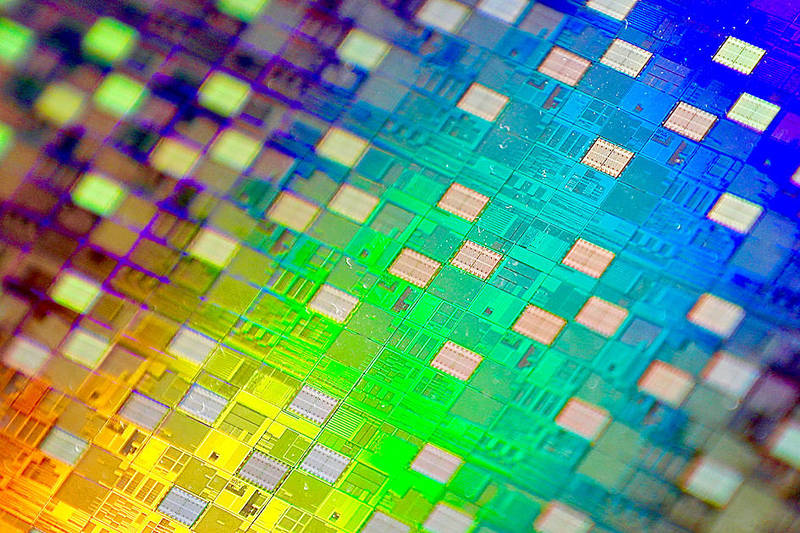《TAIPEI TIMES》 US to brief firms on chip controls

A silicon wafer is displayed at the Semicon Taiwan trade show in Taipei on Sept. 15, 2022. Photo: EPA-EFE
SEMICONDUCTORS: The briefings are organized by the American Institute in Taiwan and representatives from Taiwanese semiconductor suppliers were invited
/ Staff writer, with CNA
US officials are to brief Taiwanese semiconductor suppliers on new export controls in March, the Industrial Development Administration (IDA) said yesterday.
The IDA, part of the Ministry of Economic Affairs, said the briefings would be organized by the American Institute in Taiwan (AIT), Washington’s de facto embassy in Taiwan.
Representatives from Taiwanese semiconductor suppliers stationed in the country’s science parks, including the world’s largest contract chipmaker, Taiwan Semiconductor Manufacturing Co (TSMC), have been invited to the briefings, it said, adding the briefings would be followed by a question and answer session to help suppliers understand the rules and avoid being sanctioned.
To prevent China from acquiring advanced chip production technologies and equipment, Washington has tightened export controls since October last year and threatened to punish noncompliance with restrictions on logistics and fund flows.
The IDA said that the US has added a ban on selling chips with a computational performance density exceeding 4,800 tera operations per second (TOPS) to China.
In addition, Chinese producers of 4,800TOPS chips are banned from acquiring pure-play foundry services that apply to US production technologies, the IDA said.
In October last year, AIT organized similar briefings in Taiwan with two senior officials from the CHIPS Program Office, one of two offices administering the US$39 billion budget from the CHIPS Act.
The Creating Helpful Incentives to Produce Semiconductors (CHIPS) and Science Act, officially signed into law by US President Joe Biden in 2022, was aimed at getting semiconductor manufacturers to invest in the US and making it less dependent on overseas chip suppliers, including those in Taiwan.
The legislation provided US$52.7 billion for semiconductor research, development, manufacturing and workforce development in the US, including US$39 billion in manufacturing incentives.
Since the law was introduced, there has been some confusion on what types of companies would be eligible for subsidies under the act, including whether suppliers of semiconductor materials would qualify.
Meanwhile, with China intensifying efforts to strengthen its semiconductor industry, the IDA has assigned about NT$2.2 billion (US$70.42 million) to help local IC designers and semiconductor raw material and equipment suppliers strengthen their processes.
The NT$2.2 billion is part of the government’s 10-year US$300 billion Chip-based Industrial Innovation Program initiated by the National Science and Technology Council to help Taiwanese IC
designers secure a higher share in the global market, the IDA said.
According to the IDA, there are more than 200 IC designers in Taiwan, including many small ones or start-ups that need financial assistance to grow, and the NT$2.2 billion is to help local IC designers develop the 16-nanometer process and more advanced technologies to meet growing demand from artificial intelligence development, high-performance computing and automotive electronics.
The IDA said IC suppliers interested in the funding should submit their applications by March 29.
Last year, Taiwanese IC designers owned a 39 percent share in the global high-end processes, the ministry said, forecasting that the share would grow to 43 percent this year on the back of the government’s support.
As for semiconductor raw materials and equipment, the IDA said that their technologies have extended to advanced 2.5D-3D applications from 2D, and the new technologies have become a trend in the IC packaging and testing service industry.
新聞來源:TAIPEI TIMES

















